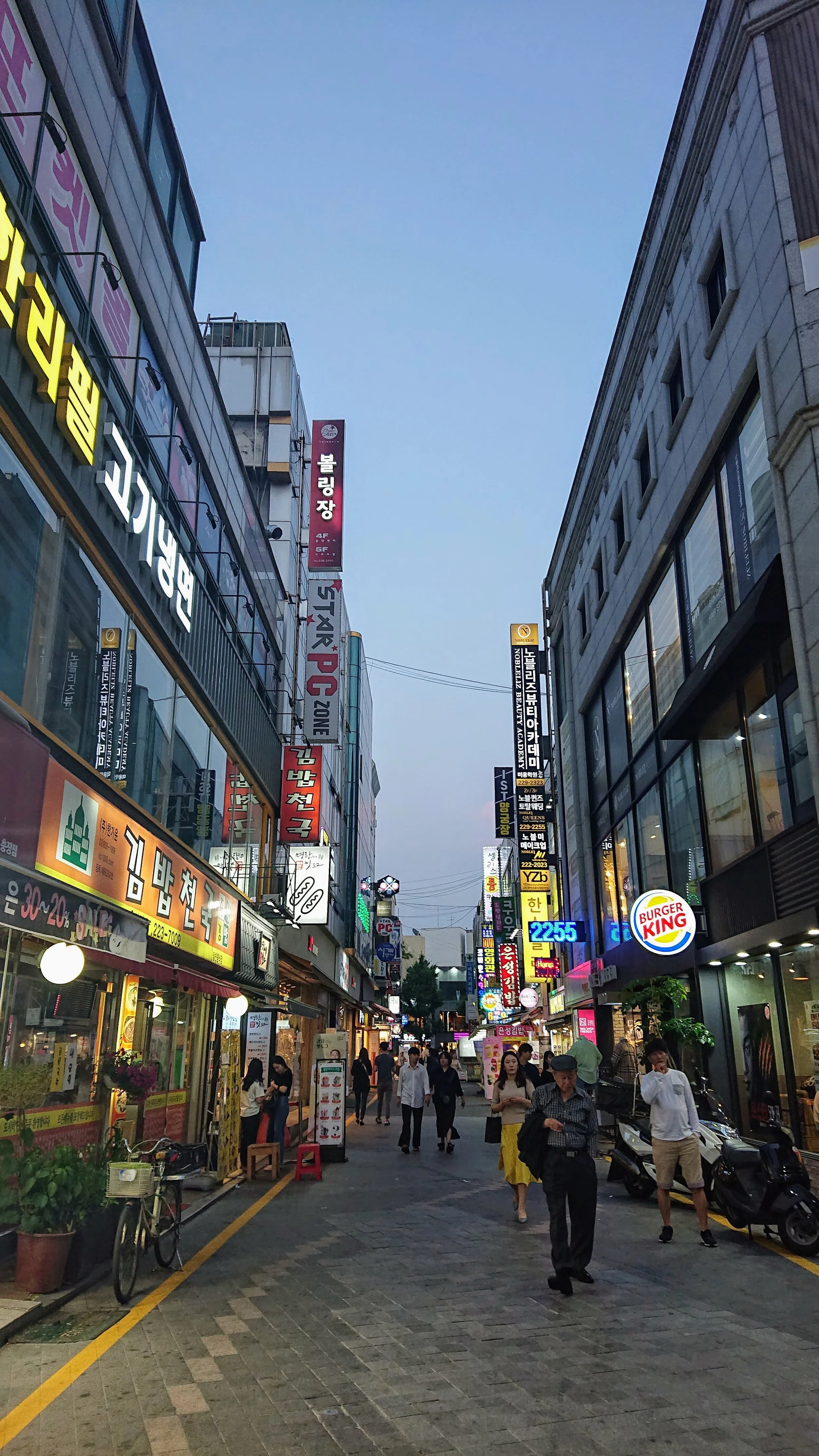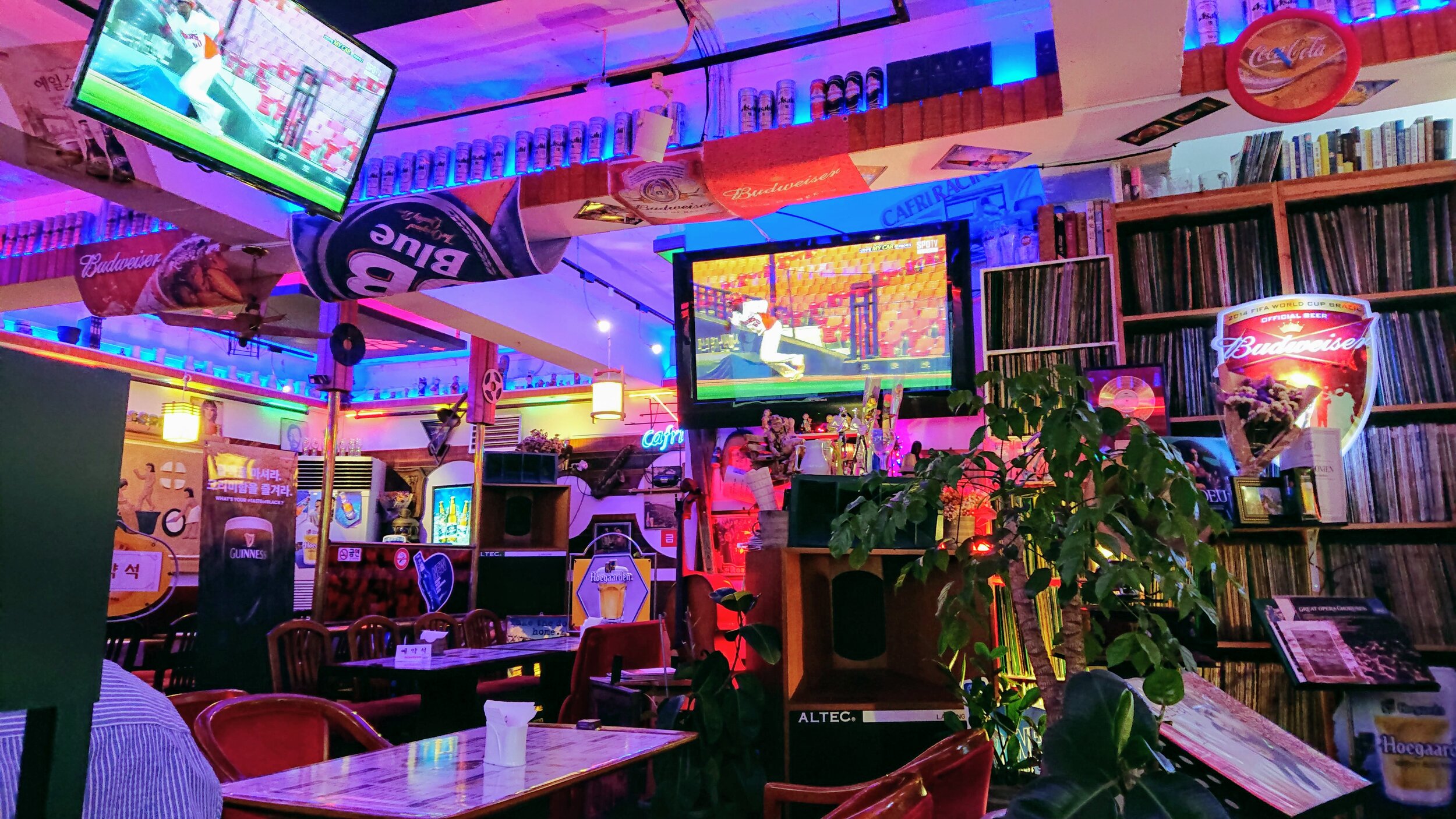The next day, we rode back along the main highway to the bus station, 10 km northwest of downtown Busan, to catch our express bus to Gwangju. The timetable stated a journey of 3 hours, and tickets were a steal at 7,500 won per person. Best of all, all bikes travel for free on the intercity lines – as long as they fit in the baggage compartment below decks. Which is by no means a given when your bike is as big as ol’ Samson.
Our driver looked at the tandem in horror, and kept telling us and everyone within hearing distance that it was impossible. But where there is Jess’s will, there is always a way. Against the protestations of the sceptical driver, she dived into the belly of the bus, and as Neil fed the bike in, she wedged the bike carefully and securely in place (derailleur side up, natch).
Jess’s stubbornness can be both a blessing and a curse, however. Having successfully installed the bike, she was now stuck within the steel cage. The driver’s angry I-told-you-sos turned into laughter at the crazy sight of her sheepishly crawling her way out.
“That’s another fine mess you’ve gotten me into.”
Taking the opportunity for a mid-morning nap, we woke up at the halfway mark when the bus pulled into a rest station for everyone to stretch their legs. This one had the usual amenities you’d expect anywhere in the world, but we were quite taken by the nifty artificial waterfall outside the bogs.
We had noticed earlier that a whole gaggle of grannies had crowded the front of the bus, chirping and tittering away. Our curiosity was piqued, as this scenario usually means that they’re talking smack about someone’s daughter or other, and Jess is the queen interpreter when it comes to such things. Imagine our surprise when the cause turned out to be the aforementioned grumpy driver flirting away with them. Yes, the surly sceptic was quite a hit with the ladies. Just goes to show you never can tell.
We reached our final destination at 3:30 PM and repeated the same rigmarole as this morning with the tandem before cycling to where the real action was. Gwangju’s “downtown” is actually in the far east of the city, also known as the Geumnamno District. We were lucky enough to procure a motel that was in the outskirts along a quiet street, but still within a minute’s walk away from the action, and at a relatively affordable (for the city, like) 40,000 won per night, too.
Hotel Charmant, 27-1 Bullo-dong, Dong-gu, Gwangju, South Korea.
Historically a hotbed of political antics, such as the infamous Gwangju Massacre (more about that in the next post), Gwangju today is a smaller version of Busan. It is the sixth-largest city in South Korea and the most populous of the Jeolla region, and its name is composed of the words Gwang, meaning “light”, and Ju, meaning “province”. Deep in the heart of agricultural Jeolla, the city is known for its rich and diverse cuisine, which we were looking forward to sampling.
Modern industry was established in Gwangju with the construction of a railway to Seoul. Some of the industries that have since taken hold include cotton textiles, rice mills, automotive, and breweries.
Outside of Seoul, Gwangju is by far Korea’s most artistically inclined city, and it has quite the vibrant culture scene, with the Gwangju Biennale being held every two years to celebrate advancements and new trends in contemporary art. There’s also a dedicated Art Street, which houses a funky collection of shops and studios selling art materials and works by local artists.
Lastly, in sporting news, Gwangju World Cup Stadium was one of the venues used for the 2002 FIFA World Cup, and was where the South Korean national football team advanced to the semi-finals for the first time in its history by defeating Spain.
A slick fixie parked outside “Bro Tower” made us giggle.
We had a rest day in our pocket, so we opted to take it easy today by beelining it for the nearest low-key looking bar. We had heard that Speakeasy was a foreigner-friendly pub where all the expats of Gwangju gathered to chew the fat, and it would have been a good opportunity for us to meet some new people with stories to tell. But when we arrived, it was dark, covered in smoke, full of men, and reminded Jess more of a midwestern dive establishment than anything else (read: not good).
So we trundled back downstairs and came upon Speakeasy’s antidote - a tiny bar washed in neon pink lights and blasting Celine Dion. Taking that to be a positive sign, we quickly settled in for a spot of trip log-gery and baseball on the TV.
There’s plenty of decent restaurants so you won’t struggle for a bite to eat. Prices are very reasonable too, due to the large number of students here. For dinner, we plumped for a canteen-esque place that wouldn’t look out of place at a secondary school, where noodles and a Korean hamburger steak with rice and dumplings knocked us back 20,000 won.
Tomorrow is technically a rest day, but as we didn’t ride today, our feet were itchy for some bike action. There’s loads to see in the surrounding area, so we might just have to take a day trip out to explore the countryside again.








